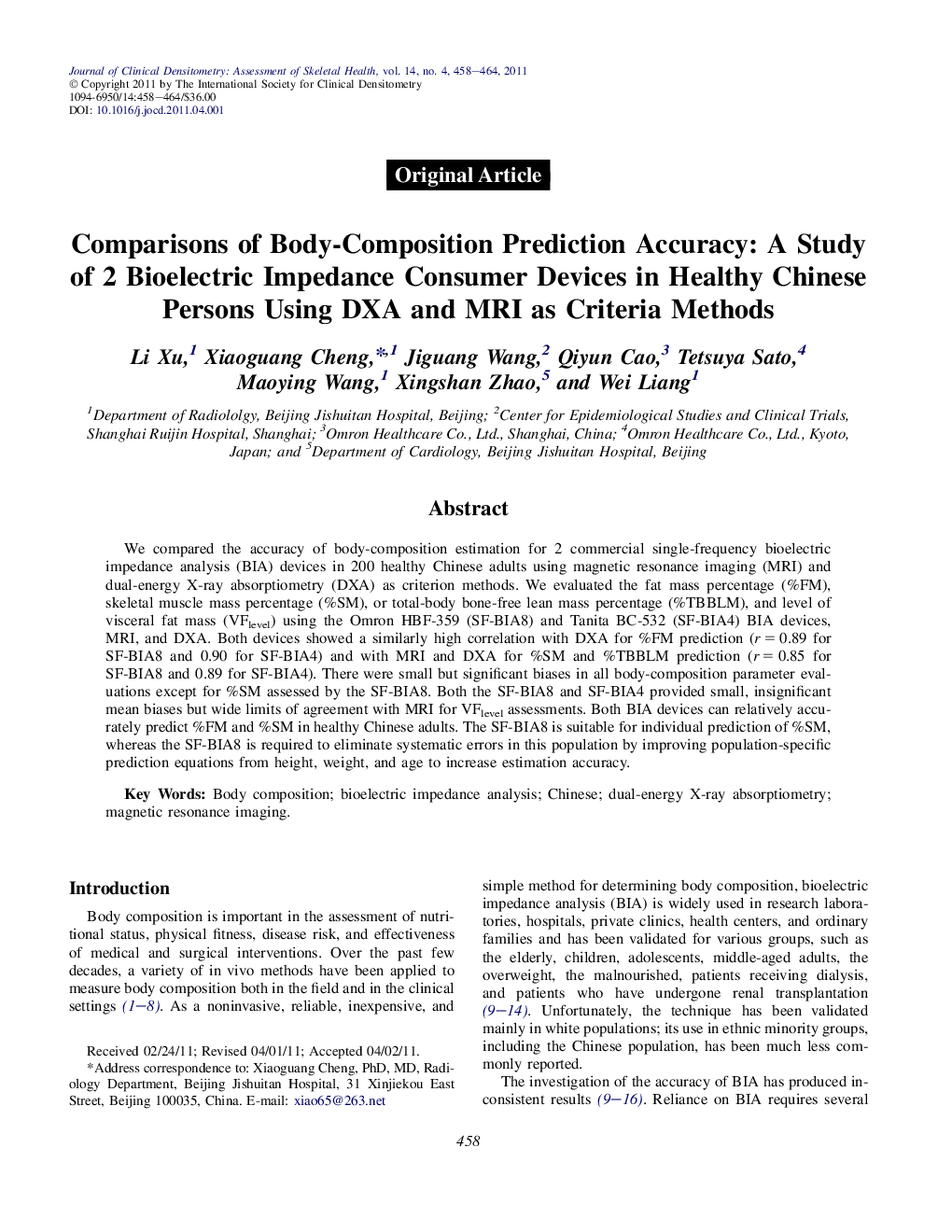| Article ID | Journal | Published Year | Pages | File Type |
|---|---|---|---|---|
| 3271271 | Journal of Clinical Densitometry | 2011 | 7 Pages |
Abstract
We compared the accuracy of body-composition estimation for 2 commercial single-frequency bioelectric impedance analysis (BIA) devices in 200 healthy Chinese adults using magnetic resonance imaging (MRI) and dual-energy X-ray absorptiometry (DXA) as criterion methods. We evaluated the fat mass percentage (%FM), skeletal muscle mass percentage (%SM), or total-body bone-free lean mass percentage (%TBBLM), and level of visceral fat mass (VFlevel) using the Omron HBF-359 (SF-BIA8) and Tanita BC-532 (SF-BIA4) BIA devices, MRI, and DXA. Both devices showed a similarly high correlation with DXA for %FM prediction (r = 0.89 for SF-BIA8 and 0.90 for SF-BIA4) and with MRI and DXA for %SM and %TBBLM prediction (r = 0.85 for SF-BIA8 and 0.89 for SF-BIA4). There were small but significant biases in all body-composition parameter evaluations except for %SM assessed by the SF-BIA8. Both the SF-BIA8 and SF-BIA4 provided small, insignificant mean biases but wide limits of agreement with MRI for VFlevel assessments. Both BIA devices can relatively accurately predict %FM and %SM in healthy Chinese adults. The SF-BIA8 is suitable for individual prediction of %SM, whereas the SF-BIA8 is required to eliminate systematic errors in this population by improving population-specific prediction equations from height, weight, and age to increase estimation accuracy.
Keywords
Related Topics
Health Sciences
Medicine and Dentistry
Endocrinology, Diabetes and Metabolism
Authors
Li Xu, Xiaoguang Cheng, Jiguang Wang, Qiyun Cao, Tetsuya Sato, Maoying Wang, Xingshan Zhao, Wei Liang,
